Saskatchewan in Bloom: Horticulture in Saskatchewan
With spring well-underway and gardening more popular than ever, the Provincial Archives of Saskatchewan has assembled some of our favourite horticulture photographs. As people turn to gardening for a relaxing and rejuvenating activity, they may enjoy viewing the different ways people explored gardening in the past. From a source of food to a patriotic duty, horticulture has helped shape the history of our Province. Gardens have always nourished the physical and mental health of Saskatchewanians; from a tasty vegetable patch to the timelessness of a flower in bloom.
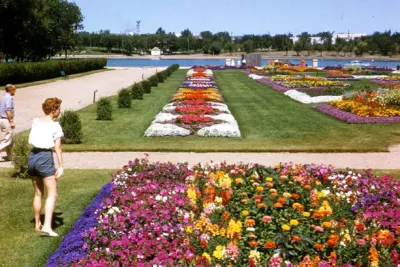
View of flower beds on Saskatchewan Legislative Building grounds, 1958. Axel Petersen fonds. PAS Photo R-C5503.
Horticulture was important to early settlers as a source of food and revenue.
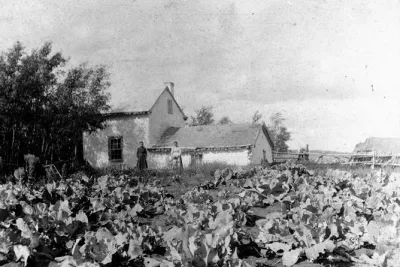
Two women and a child stand in front of a house with a vegetable garden in the foreground. 1890. PAS Photo R-B14128.
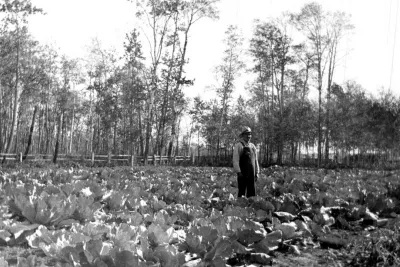
Sam Meyers standing in his cabbage patch. 1937. PAS Photo R-A22279.

Mr. Stoman's celery garden. 1938. PAS Photo R-A22278.
Early 1900s Prairie Vegetable Gardens
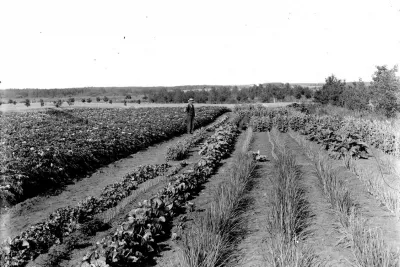
Large vegetable garden and potato patch on the Howard farm. ca. 1900. PAS Photo R-A6156.
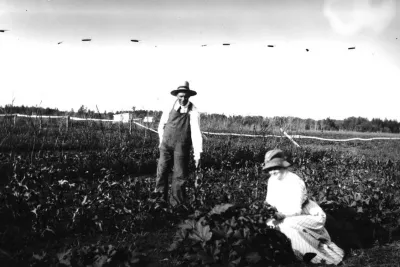
Farm near Prince Albert, farmer and wife in garden, ca. 1910. PAS Photo A16557-1.
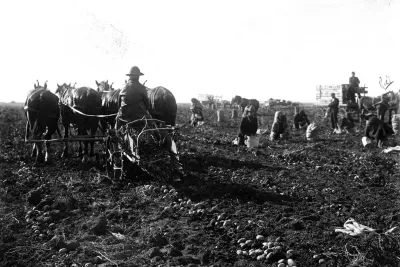
Harvesting potatoes in a field near Moose Jaw. PAS Photo R-A104.
Gardens also provided entertainment and friendly competition

H. Simons of Oxbow sits with his most recent crop. ca. 1900. PAS Photo R-B138.
Garden-themed postcards from Lanigan
Gardening could also be a family affair. Along with two garden-themed postcards from Lanigan, we feature images of two children working in their family gardens.
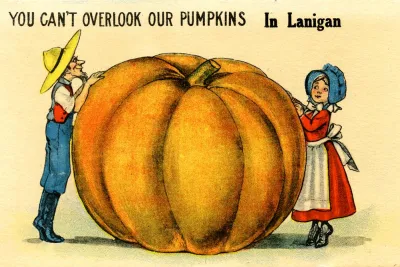
You Can't Overlook Our Pumpkins in Lanigan. ca. 1950. PAS Photo R-A8294-1.
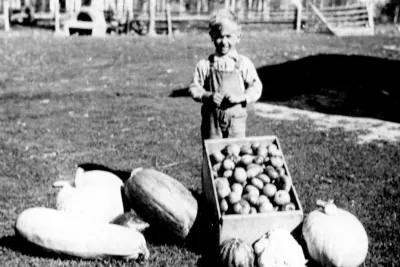
Garden produce grown in northern re-settlement area. ca. 1930. PAS Photo R-A8529.
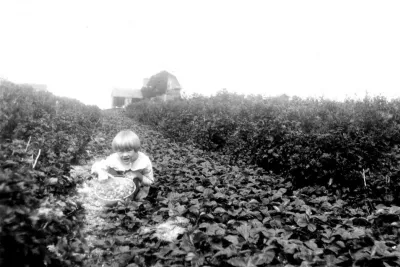
A child picking berries in a strawberry patch, E.F. Spence farm near Lancer. 1925. PAS Photo R-A20397.
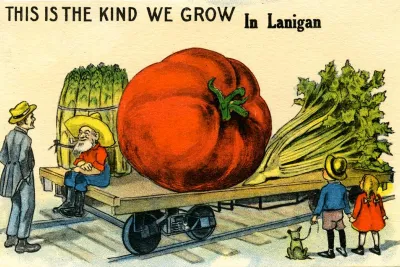
This Is the Kind We Grow in Lanigan. ca. 1950. PAS Photo R-A8294-2.
The Department of Agriculture created posters to inform about horticultural threats
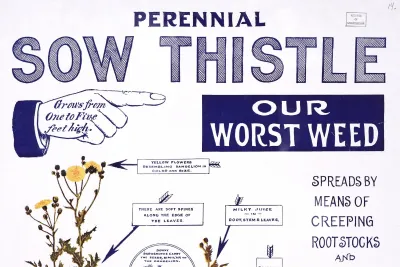
Perennial sow thistle: Worst weed in the west. ca. 1920. Saskatchewan Department of Agriculture. PAS Poster II.13. Click to see the full poster.
Horticulture was also used by schools for educating students and providing practical skills.
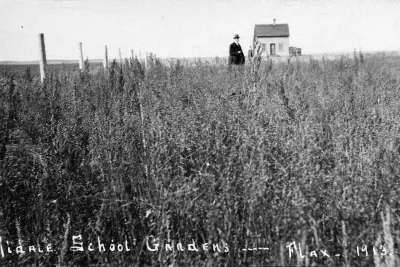
School gardens at Midale - cabbage, flax, wheat, oats and barley. PAS Photo R-A242.
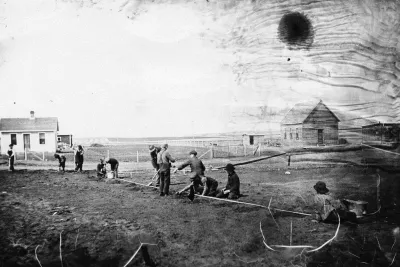
Edam school garden - planting strawberries, 1914. PAS Photo R-A2115.
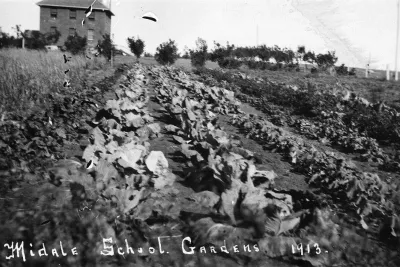
School gardens at Midale. PAS Photo. R-A242-2.
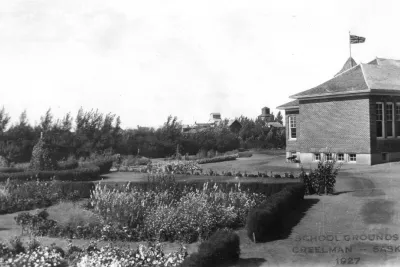
Creelman School and surrounding extensive gardens. ca. 1920. PAS Photo R-A6342-3.

D.S. McCannel, school inspector, and children in Midale school garden. PAS Photo R-A242-3.
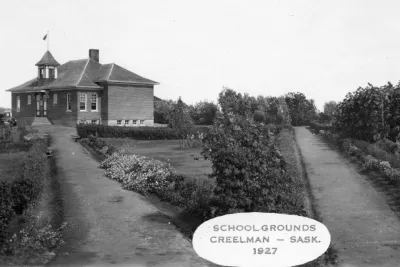
Creelman School and surrounding extensive gardens. ca. 1920. PAS Photo R-A6342-1.
Hospital Gardens
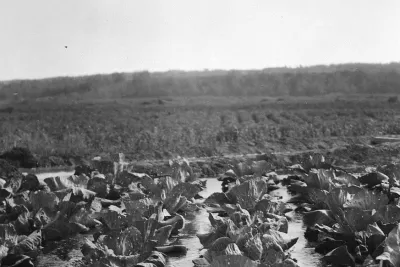
Hospitals even utilized gardens. ca. 1940s. North Battleford. PAS Photo R-A6336.

The superintendent of the time considered physical labour in the garden and other areas as being part of the patient’s treatment. PAS Photo R-A6337.
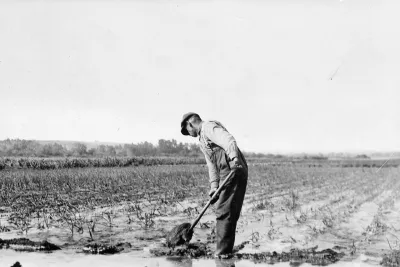
PAS Photo R-A6338.
“Victory Gardens”
While horticulture was originally practised for practical and educational purposes, it also became a patriotic endeavor. These “Victory Gardens” were popularized during World War One as a way to lessen supply strains for the war effort.
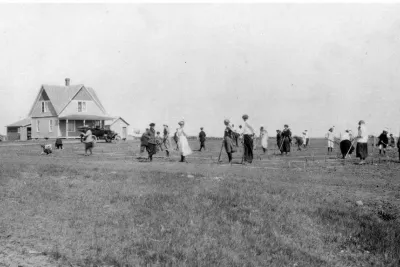
Victory gardens being tended during World War One. PAS Photo R-A9952.
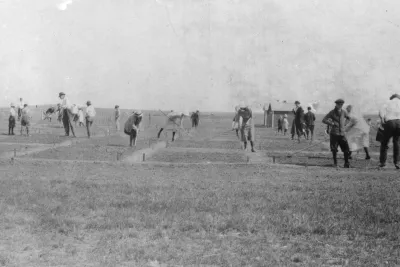
School gardens being tended before World War I. PAS Photo R-A9954.
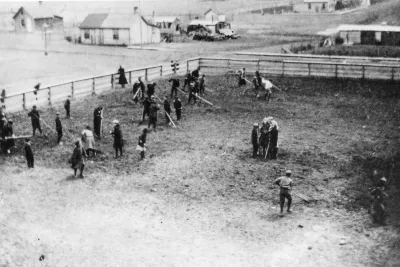
War gardens in Broadview. PAS Photo R-A20901.
Prairie Lily
Adopted as the floral emblem of Saskatchewan in 1941, the Prairie Lily grows across large sections of the province and is protected from picking, digging, or destruction by provincial law.
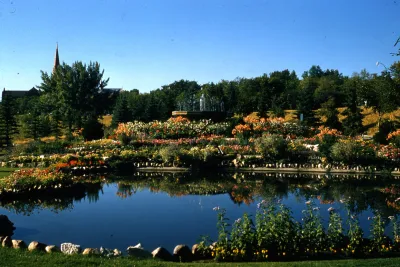
Flower beds and pond in Saskatoon park. Axel Petersen fonds. PAS Photo R-C5063.
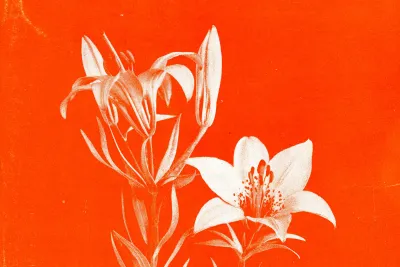
The Prairie Lily: Saskatchewan's Floral Emblem. 1948. PAS Photo R-E726. Click to see the full photo.
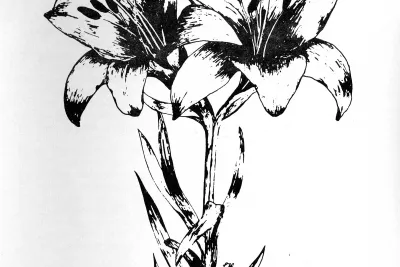
Prairie Lily description published in Woodland Wildflowers of Eastern Saskatchewan. 1966. PAS Photo R-E3732. Click to see the full photo.
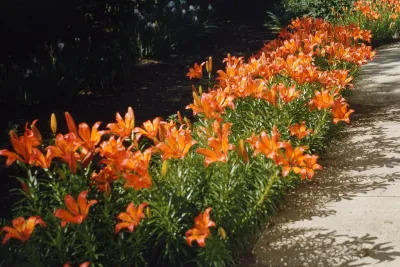
Bed of tiger lilies in bloom bordering a sidewalk. ca. 1952. PAS Photo R-C5010.
Post World War One
With the end of the World Wars, gardening continued as a civic and patriotic duty. Rather than helping feed troops, however, it now had the goal of improving cities and civic life.
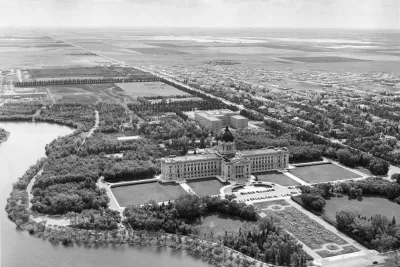
Aerial view of the front of the Legislative Building showing the flower gardens. 1956. PAS Photo R-B6191.

"Community Beauty is a Civic Duty". Regina Horticultural Society report. PAS Photo R-E2361. Click to see the full photo.
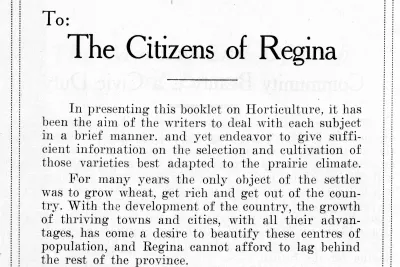
"To The Citizens of Regina". Regina Horticultural Society report. PAS Photo R-E2361. Click to see the full photo.

View of flower beds on Saskatchewan Legislative Building grounds, 1958. Axel Petersen fonds. PAS Photo R-C5503.
Urban Gardens
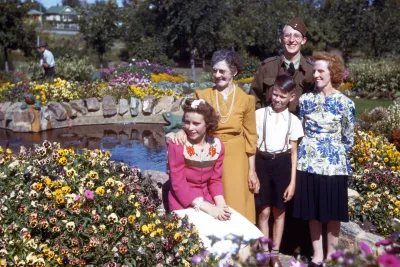
Mrs. Tom Edwards (St. Walburg) Bert Viola, Mrs. Buick and son surrounded by flower beds in Third Ave. park. 1944. Axel Petersen fonds. PAS Photo R-C4298.

The Galla and Wieb sisters surrounded by flower beds in Third Ave. park. 1944. Axel Petersen fonds. PAS Photo R-C4305.
